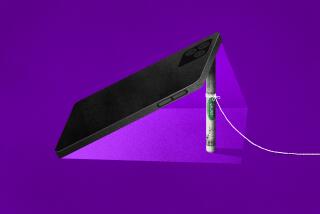Telephones Can Now Pay Bills and Shop : Telecommunications: Two new services also enable subscribers without computers to receive electronic mail and purchase groceries without leaving their homes.
SAN JOSE — Telephone users who don’t own computers can now shop, pay bills and, in some cases, read the news or exchange electronic messages from home through two low-cost services announced Tuesday.
Like cable television companies, both services provide the equipment--a special telephone in one case and a terminal that hooks up to a home phone in another--and charge customers a basic monthly fee.
“There are lots of people who want interactive services, so they can save time and money on everyday chores, like paying bills,” said William Gorog, chief executive and chairman of US Order of Herndon, Va., which makes the ScanFone device.
Both services, which each charge a $9.95 monthly fee after installation, are debuting in the San Francisco Bay Area, where tens of companies have lined up to participate. Both services have been test-marketed outside California and plan to expand nationally if they catch on.
The ScanFone, which is the simpler device, lets users order groceries from Safeway Stores, conduct financial transactions through BankAmerica Corp. and order items by mail from a specialized catalogue.
The ScanFone has a built-in credit card scanner and comes with a light pen for reading bar codes for grocery or mail order items. Safeway, which provides a catalogue with 6,000 items and their bar codes, even delivers the goods--for another $9.95.
To pay bills, for example, the ScanFone issues a personal list with special bar codes for separate bills, from house payments to utilities. The user scans the bar code for a bill with the light pen, then uses the ScanFone’s key pad to enter the amount and the date to be paid. Bills are deducted directly from the user’s bank account and itemized on the customer’s monthly bank statement.
More to Read
Inside the business of entertainment
The Wide Shot brings you news, analysis and insights on everything from streaming wars to production — and what it all means for the future.
You may occasionally receive promotional content from the Los Angeles Times.








